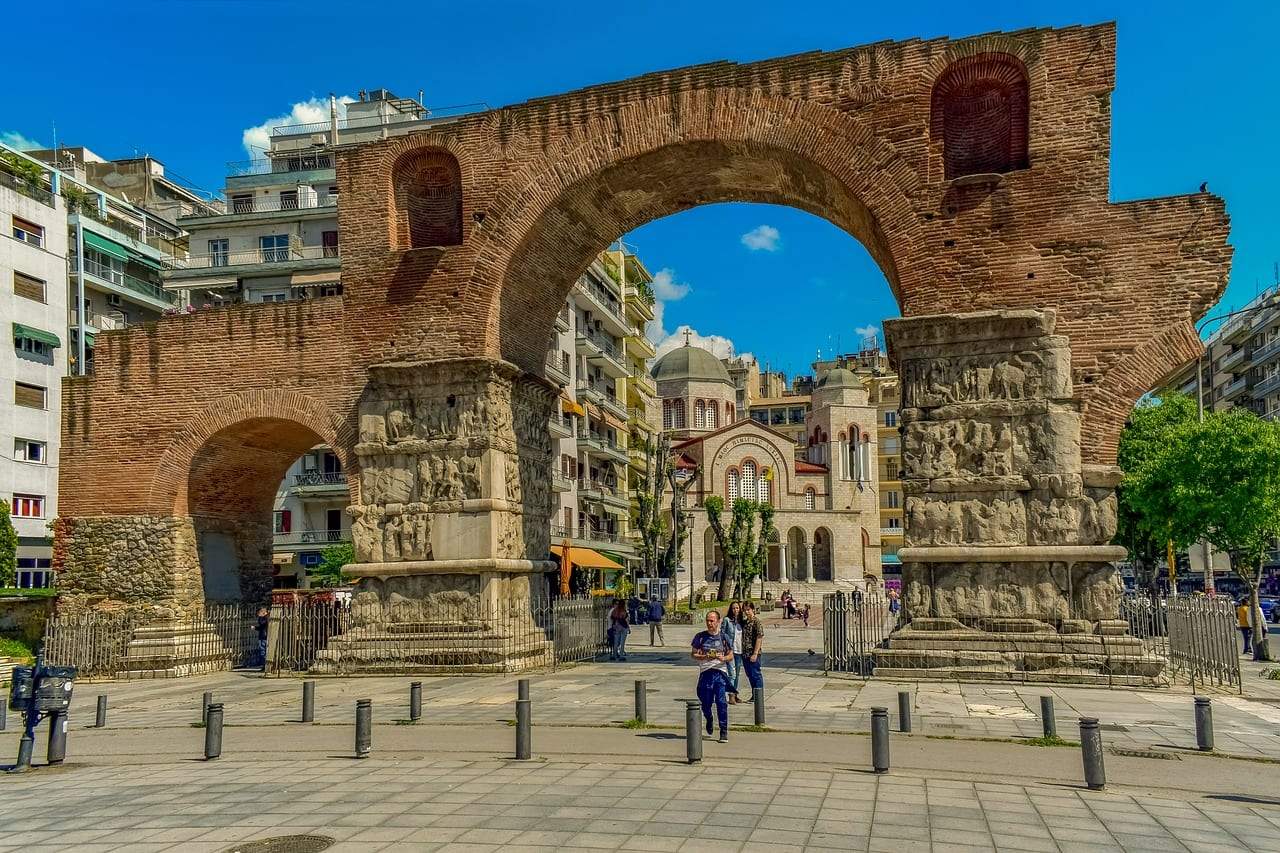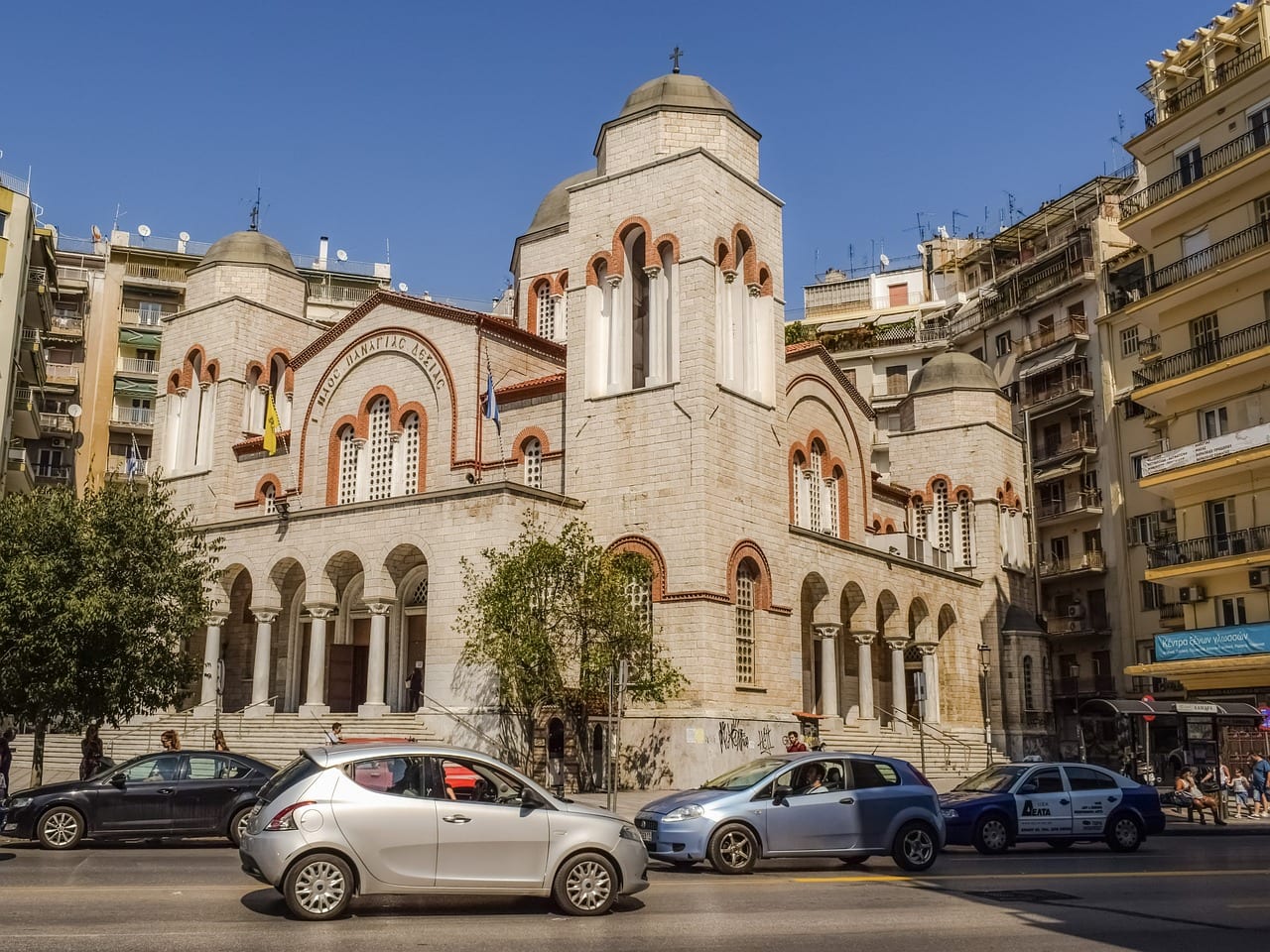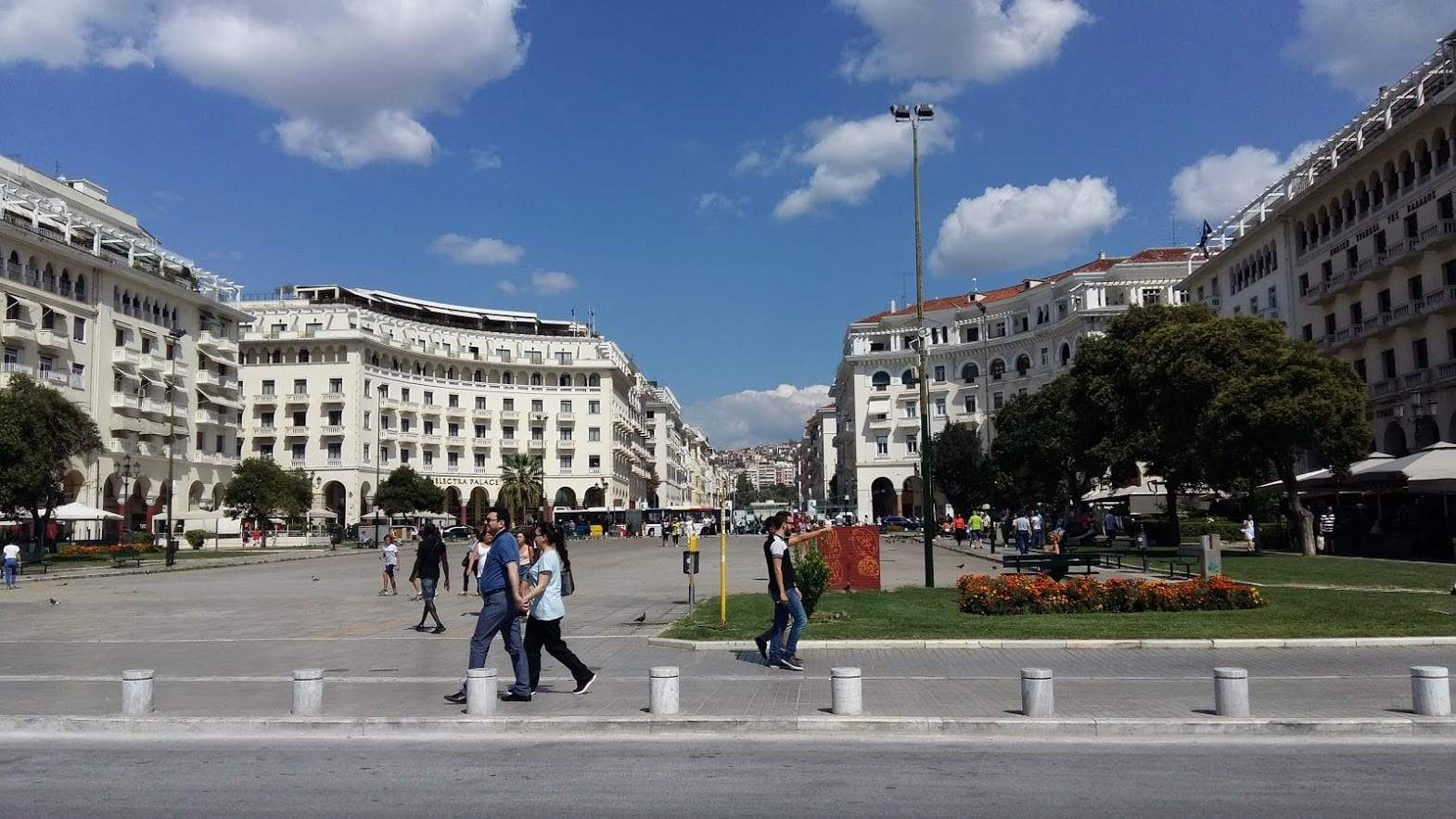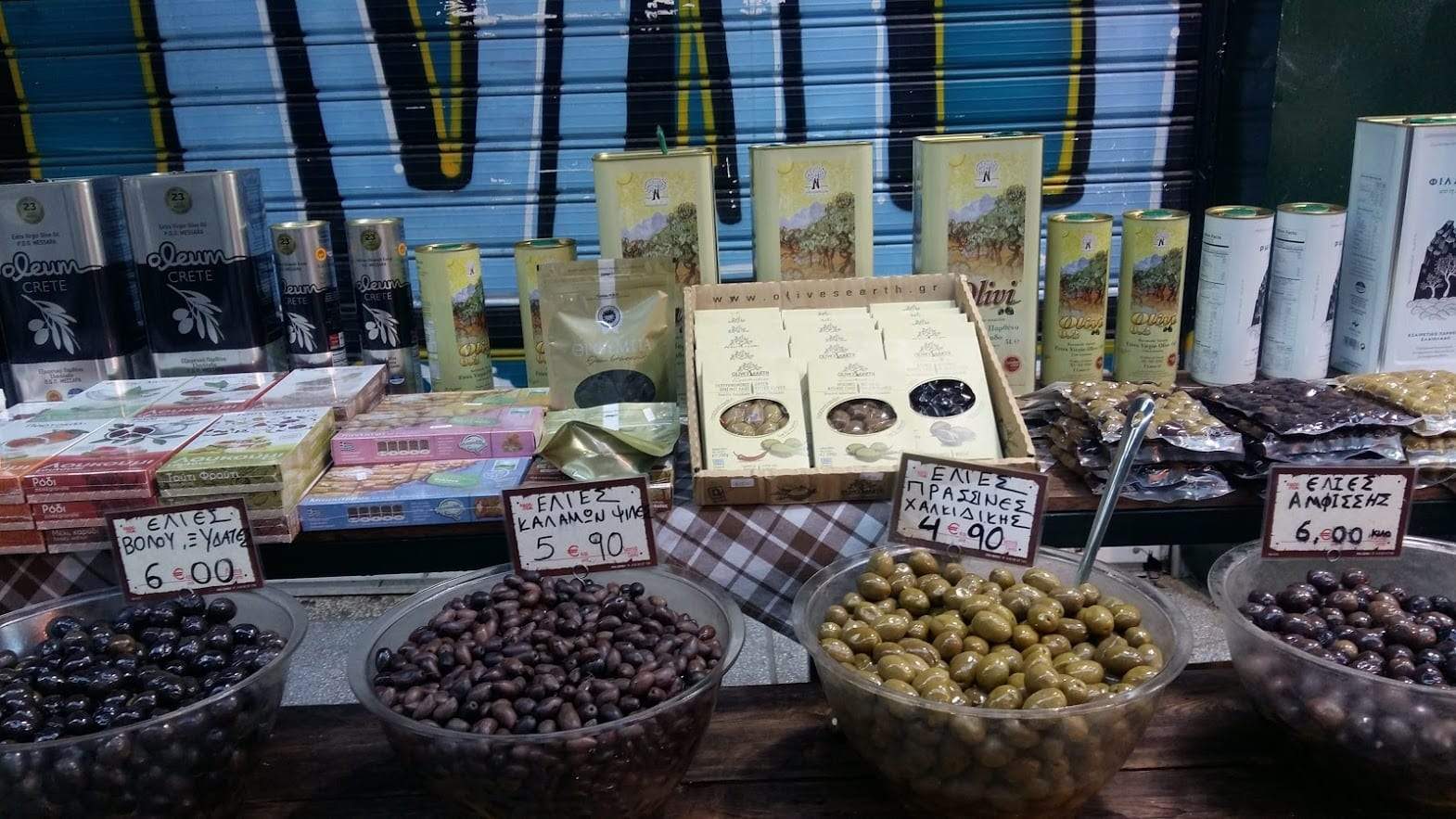The best things to do in Thessaloniki include visiting the iconic White Tower, spending time at the Roman Rotunda, and enjoying some of the best food and nightlife in Greece.

Thessaloniki Sightseeing Guide
Like many people, you may have never considered Thessaloniki as a possible destination to visit in Greece. Yet, this lively coastal city has lots to offer. The iconic White Tower acts as a good place to start exploring the waterfront, and strolling through the city reveals Thessaloniki as one of the most underated Greek cities.
The best things to see and do in Thessaloniki include visiting landmarks and soaking up the local vibe, such as:
- Visit the White Tower
- Stroll along the waterfront
- See the Rotunda of Thessaloniki
- Photos at The Arch of Galerius
- Check out the Byzantine churches
- Archaeological Museum of Thessaloniki
- Jewish Museum of Thessaloniki
- See The Atatürk House
Dive into my Thessaloniki sightseeing guide, where I go into more detail about the top things to do in Thessaloniki, main attractions, and some hidden gems.
Where is Thessaloniki?
Thessaloniki is in North Greece, in the administrative region of Central Macedonia. You can get to Thessaloniki through an international flight or through a local flight / train / bus from Athens.
Thessaloniki is often the starting point for people who want to go to Chalkidiki, an area famous for its beaches. Stay a day or two if you can though. It’s also a fantastic city break destination in Greece.
What is so special about Thessaloniki?
Greece’s second biggest city, Thessaloniki is often ignored by people visiting Greece. Which is too bad, as Thessaloniki is one of the most interesting and charming cities in Greece.
With tons of sightseeing, amazing food, a vibrant night life, a lively seaside promenade, a relaxed vibe and thousands of students, Thessaloniki can quickly become one of your favourite cities in Greece.
History of Thessaloniki
Although it’s a fairly compact city, Thessaloniki has many interesting sights, from several different eras. In order to appreciate better what to see in Thessaloniki, it makes sense to know a little about the city’s past.
Like most of Greece, Thessaloniki has a very long and rich history. The city was founded in 316/315BC, a few years after the death of Alexander the Great.
Its founder was Kassandros, one of Alexander’s generals, who was later pronounced King of Macedon. The city was named after Kassandros’ wife Thessaloniki, who was also Alexander’s half-sister.
The first walls were built around the city in the 2nd century BC, in order to protect it from foreign invasions. Regardless, the city passed on to the Romans in 168 BC, after the Kingdom of Macedon was destroyed.
Due to Thessaloniki’s strategic placement on the map, it soon became an important commercial centre, trade hub and port. The city’s acropolis was built in 55 BC.
Churches in Thessaloniki

Christianity first arrived in Thessaloniki through Apostle Paul, in around 50 AD. Although Paul was better received in Thessaloniki than in Athens, it took about four centuries for the first Christian church, Agios Dimitrios, to be built.
Today a large basilica with impressive catacombs, the church is named after the patron saint of the city. At that time, Thessaloniki was a very important city, second only to Istanbul.
Many of the existing sites, such as the Rotunda, Galerius’ Arch and the Roman Agora, belong to that era.
Byzantine Empire Era
After the fall of the Roman Empire and during the Byzantine era, Thessaloniki was attacked by barbarians, the Slavs, the Saracens and the Bulgarians.
Apart from the ongoing attacks, a massive earthquake in 620 AD destroyed several buildings, and parts of the city had to be rebuilt.
The era between the 10th and 12th centuries was generally peaceful, with a few attacks by the Bulgarians and the Normans.
Crusaders in Thessaloniki
In the beginning of the 13th century, Istanbul was conquered by the Francs of the Fourth Crusade. As a result, Thessaloniki came for the first time into the hands of the Latin Empire, though new conquerors and rulers passed by the city in the decades that followed.
Nevertheless, commerce and Byzantine art flourished during that time, and this can be observed in some of the city’s most important churches, like Agia Sofia.
Ottoman Thessaloniki
After a brief period of conquest by the Venetians, Thessaloniki became an Ottoman city in 1430. As a result, the already significant Muslim and Jewish populations of the city started growing. This meant the Greek population of the city became a minority, and many of the Orthodox churches were transformed into mosques.
The city’s landmark, the White Tower of Thessaloniki, was built in this period 1535 to be used as a prison.
For the duration of the next centuries, Thessaloniki was home to several distinct populations, mostly clustered in different areas of the city – as an example, many Ottomans lived in the Ano Poli (Upper Town).
Great Fire of Thessaloniki
The Great Fire of Thessaloniki, in 1917, destroyed a large part of the centre of the city, though some of the mosques and hammams, built in stone, were left fairly intact. Many buildings in the Ano Poli survived, and as a result Ottoman architecture in Thessaloniki is quite prominent.
After the Great Fire, about a fourth of the population of the city, mostly Jewish people, were left homeless. Many of them emigrated to other countries later, to be soon replaced by refugees who came from Turkey after the population exchange in 1921. The parts of the city that had been destroyed were later reconstructed according to a modern plan.

History Lesson Over!
Too much information? Sure – I told you the city has a long and rich history! And this is without any information about the involvement of Thessaloniki in the Balkan and World Wars, which is another long chapter in the city’s history.
What to see in Thessaloniki

Now that you have got a quick idea of Thessaloniki’s history through the centuries, you can understand that, just like Rome, Thessaloniki is really an open museum, with Roman and Byzantine buildings everywhere. With this in mind, here are the top things to do and see in Thessaloniki.
Visit the Roman monuments in Thessaloniki
The Roman Forum in Thessaloniki, known also as Ancient Agora or Roman Agora, was constructed by the Romans in the 1st century AD. Just like the Ancient Agora in Athens, it was the place where all commercial, financial, social and religious activities were taking place. The Agora was active until the 4th century, when the centre of the city moved further east.
Within the grounds of the Agora you can see an ancient amphitheatre which has been restores, as well as remains of certain buildings and underground corridors. The Roman Forum also has a museum, partly hidden underground – don’t miss it!
Galerius Palace Complex
Alongside Navarinou Square, you can see the remains of the Galerius Palace Complex. The luxurious, massive complex was built by Emperor Galerius, who realised the potential of the city early on and wanted to construct a palace to match.
It included several buildings, many of which can still be seen today, and spread over a total area of 15 hectares / 37 acres. Apart from the Roman monuments, Navarinou Square is a hangout for students, and is lined with many interesting shops.
The Arch of Galerius, known as “Kamara” is a popular meeting point for locals. It was built in the beginning of the 4th century AD, and much of its decoration highlights Emperor Galerius’ winning battles against the Persians.
Visit the UNESCO monuments in Thessaloniki
In 1988, fifteen Paleochristian and Byzantine monuments in Thessaloniki were categorized as the Paleochristian and Byzantine Monuments of Thessaloniki UNESCO World Heritage Site. This is one of 18 UNESCO Heritage sites in Greece.
The most significant UNESCO buildings in Thessaloniki are:
The Byzantine Walls of Thessaloniki

The Byzantine Walls of Thessaloniki were first constructed in the 2nd century BC, and were later rebuilt and reconstructed several times, by the Romans, the Byzantines and the Ottomans.
They were around 8 km in total, and about half of them have survived. Inside the Walls you can see the Heptapyrgion Castle, which was used as a prison until 1989.
Today it is open to visitors as a museum, and often hosts interesting exhibitions. This is one of the best places for Thessaloniki views.
The Basilica of Agios Dimitrios
The basilica of Agios Dimitrios stands in the place of an early Christian temple, which was destroyed during the earthquake in 620 AD and was later rebuilt.
The basilica suffered major damage in the Great Fire in 1917, and was subsequently restored. Fortunately, many of the 5th century mosaics have survived. The basilica hosts a Byzantine exhibition in its extensive catacombs.
The Rotunda of Thessaloniki
The Rotunda, which was recently opened to the public, was built by the Romans and was later expanded and served as a Christian church.
Even though part of the Rotunda was destroyed by the earthquake in 620 AD, many of its original mosaics remain intact. Don’t forget to check out the acoustics!
Other UNESCO monuments in Thessaloniki
Dotted around Thessaloniki, you can see, or perhaps literally stumble upon, many more UNESCO Byzantine monuments. During the Ottoman era, all of the Byzantine churches in Thessaloniki were transformed into mosques, and much of the artwork was covered in plaster. Fortunately, due to restoration projects, a lot of it has been uncovered.
If you have several days in Thessaloniki, it’s worth visiting all of the Byzantine churches in Thessaloniki. Even if you are not too interested in Byzantine architecture, you will be impressed with some of the mosaics or the frescoes.
For many of them, opening hours are irregular and vary a lot depending on season and availability of personnel. Overall, your best bet is to visit in the morning.
Byzantine Churches in Thessaloniki
- The church of Agia Sofia, with amazing frescoes, was built in the 8th century and replaced a Paleochristian church in the same spot. Its design is similar to the famous Hagia Sofia in Istanbul. The exquisite mosaics date from four different eras.
- The temple of Osios David / Latomou Monastery in Ano Poli has an impressive 6th century mosaic and unique 12th century frescoes
- The basilica of Panagia Ahiropiitos, built in the 5th century, has survived pretty much intact since it was built, and some of the original mosaics can still be seen
- The temple of Panagia Halkeon, close to the Roman Agora, was built in 1028 AD.
- The temple of Agios Panteleimonas, a small temple close to the Rotunda, has few frescoes left
- The temple of Agii Apostoli on Olympou street has an amazing mosaic
- The temple of Agios Nikolaos Orfanos is located in Ano Poli, and is home to some of the most impressive art in the Byzantine world
- The temple of Agia Ekaterini, dating from the 13th-14th century, is close to Olympiados street. Most frescoes have not survived, but the architecture of the temple is worth paying a visit.
- The temple of Sotiras is a small temple built in the 14th century
- Vlatadon monastery is right outside the Acropolis walls. It was founded in the 14th century, and it’s the only Byzantine monastery of Thessaloniki that is still in use.
- The small temple of Prophet Ilias on Olympiados street has unique architecture
- Finally, the Byzantine baths on Theotokopoulou street are an excellent example of a fully functioning bathhouse of the Byzantine era.
Visit the White Tower of Thessaloniki

Once the city’s grim prison, the White Tower has been transformed into a museum hosting a superb exhibition on Thessaloniki’s rich history.
Apart from the multimedia material, you will be impressed by the Tower’s architecture. Note that, if you don’t speak Greek, you will need to get an audio guide, as due to lack of space the printed signs are only in Greek.
The White Tower of Thessaloniki is also one of the most famous landmarks in Greece.
Visit the Ano Poli in Thessaloniki
By now, you are getting an idea of the wealth of Roman and Byzantine monuments in Thessaloniki. Given that many of them are in Ano Poli, you can easily spend a whole day in that area alone.
The Ano Poli itself is a unique neighbourhood that survived the Great Fire in 1917. The area is very picturesque, and reminds Greece of the 1960s. Allow enough time to stroll around the streets and soak the ambience.
If you don’t mind walking, the best way to explore the city is on foot. You can walk up all the way to Ano Poli, see the Walls and Castle, sit for a coffee or meal, and then head down to the centre, following a route that takes you past some of the Byzantine churches. If you prefer, you can also take a public bus or taxi to Ano Poli, and just walk down.
The easiest way to see Thessaloniki including the Ano Poli and Castle, is the hop-on hop-off bus, stopping at the city’s major sites.
Visit the Museums in Thessaloniki
A city where culture is everywhere, Thessaloniki boasts a large number of museums. Whether you are interested in history, ethnography or art, there will be at least one museum you will love.
The Archaeological Museum in Thessaloniki
This is one of the largest museums in Greece. It explains life in the wider area of Thessaloniki and Macedonia from prehistoric to Byzantine times. It is also home to some of the most important artefacts from the ancient Kingdom of Macedon.
More here: The Archaeological Museum in Thessaloniki
The Museum of Byzantine Culture in Thessaloniki
This museum showcases various Byzantine artefacts found in the area surrounding Thessaloniki. There are 11 rooms, each one focusing on a specific time period, as well as temporary exhibitions. You can see mosaics, manuscripts, frescoes, icons, coins, and several other objects that will give you an idea about life during the Byzantine Era.
More here: The Museum of Byzantine Culture in Thessaloniki
Travel Tip: A special ticket valid for 3 days is available, offering access to the two above museums and other sites.
The State Museum of Contemporary Art
Home to several works of modern and contemporary European art, as well as a large collection of Russian Avant-Garde Art. The museum is split in two separate buildings – the Moni Lazariston complex, hosting the Russian collection, and the B1 Warehouse at the Port of Thessaloniki. There are permanent and temporary exhibitions, so check the website before you visit.
More here: The State Museum of Contemporary Art
The Museum of Photography
Hosting rotating exhibitions, this excellent museum is located at the Port area. There is always something interesting going on, and you can also spend some time at the café, with lovely views towards the sea.
More here: The Museum of Photography
The Cinema Museum
Right next door to the Museum of Photography is the Cinema Museum, showcasing the history of Greek cinema from the early 20th century. Even if you don’t speak much Greek, you will be able to appreciate many of the exhibits.
More here: The Cinema Museum
The Macedonian Museum of Contemporary Art
Hosts an extensive selection of Greek and international works of art, mostly acquired through private donations. Those familiar with Greek artists will be delighted to see artworks by people like Akrithakis, Zongolopoulos, Tsoklis, Moralis, Mitaras etc.
The Museum of the Macedonian Struggle
Addresses the 19th-20th century history in Thessaloniki, and follows life in the city until the present day. It’s a great place if you want to explore Thessaloniki’s recent history.
More here: The Museum of the Macedonian Struggle
The Jewish Museum in Thessaloniki
Founded in 2001, it aims to collect and showcase existing documents and artefacts, in order to present to the public the long presence of Jewish people in Thessaloniki. The museum has important collections of pre-war photos and documents.
More here: The Jewish Museum in Thessaloniki
Folklife and Ethnological Museum of Macedonia-Thrace
Finally, the Folklife and Ethnological Museum of Macedonia-Thrace, showcases aspects of the traditional culture of northern Greece.
More here: Folklife and Ethnological Museum of Macedonia-Thrace
Stroll along the Old Promenade – Palia Paralia
One of the most popular walks in Thessaloniki for decades, this stroll follows Nikis Avenue, beginning at the port and ending at the White Tower. While at the port area, you can visit some of the city’s numerous museums, but also sit and look at the sea, like many locals.
The Old Promenade passes in front of Aristotelous Square, one of the locals’ favourite areas. There are also numerous cafés and a few tavernas on the way, so you can stop at any point and admire the views.
Stroll along the New Promenade – Nea Paralia

The New Promenade is one of the newest additions to the city’s landscape. Starting from the White Tower of Thessaloniki and extending to the west, it is one of the prettiest and liveliest parts of Thessaloniki.
Along the wide pedestrianized area you will see couples, cyclists, street vendors, parks, and the famous statue Umbrellas by Giorgos Zongolopoulos, an important Greek artist. Stop for a snack, or hop in a small boat-bar and enjoy a beer on board.
Food in Thessaloniki – What to eat in Thessaloniki

Thessaloniki has a really, really relaxed vibe. As such, it shouldn’t come as a surprise that eating out is a big thing. There are hundreds of tavernas and mezedopolia where you can have lots of tasty dishes and strong drinks like ouzo and tsipouro to go with them.
Where to eat in Thessaloniki
The areas where you can’t go wrong with food are Ladadika, Bit Pazar and Athonos square, and also the old markets Kapani and Modiano. If you visit the markets during daytime, you can also find all sorts of produce – more on this below.
You shouldn’t leave Thessaloniki without having tried a crispy koulouri from a street vendor, a rich bougatsa pie with a sweet or savoury filling of your choice, and a trigono Panoramatos, a sweet delicacy filled with a type of custard cream.
Thessaloniki’s markets

Rather than just a place to have lunch or dinner, Thessaloniki’s markets are unique. They are the places where you can get the true feel of the city.
Here is where locals buy everything, from fruit, veg and olives to meat, fish, nuts and spices, but also clothes, household items, flowers, knick-knacks and many other things.
The most famous markets are Kapani, Modiano, Vlali and Bezesteni, whereas if you are into antiques you should visit Bit Pazar on a Saturday.
These markets were built many years ago, and while some of them have seen better days, they are still very interesting to visit, and even more so if you are looking to buy a few things.
Nightlife in Thessaloniki
A city with a totally walkable centre and full of students, Thessaloniki never sleeps. You will find all-day cafés / bars here, there, and everywhere, and many of the places offering food will be open till early in the morning or even 24 hours.
Some of the best places to go for a late coffee or drinks are on Syggrou and Valaoritou Street and in the area of Ladadika. Check out also Iktinou and Zefxidos pedestrian streets, as well as Proxenou Koromila.
Thessaloniki International Film Festival
If you happen to be in Thessaloniki during October-November, don’t miss the Thessaloniki International Film Festival.
During the Festival, you will have the chance to watch the best independent movies from all over the world, and participate in numerous events.
The Festival is popular, and if you are going around that time of year you should book your accommodation in advance. In 2019, the Festival will take place on 31 October – 10 November.
Day trips from Thessaloniki
If you want to get away from the city, there are plenty of choices for day trips from Thessaloniki. You can go further out on an organized tour, such as a trip to Meteora or a visit to Pella, the birthplace of Alexander the Great, and Vergina, the place where the tombs of the Macedon Kings have been discovered.
If you are looking for something more relaxed, you can either go on a boat trip to Mt Athos, an area full of monasteries where women are not allowed, or perhaps take a leisurely cruise to Chalkidiki.
Thessaloniki Sightseeing Guide

Whether you are in Thessaloniki for a day or for a week, this Thessaloniki sightseeing guide will help you. If you have any more ideas, please share them in the comments below.
What is Thessaloniki best known for?
Thessaloniki is best known for its rich history, stunning architecture, and delicious food. As the second-largest city in Greece, Thessaloniki boasts an impressive array of ancient ruins, including the Roman Forum and the Arch of Galerius. The city also features a vibrant waterfront area, a bustling shopping district, and a diverse culinary scene that draws from the flavors of Greece, the Middle East, and the Balkans.
Is it worth going to Thessaloniki?
Yes, Thessaloniki is definitely worth visiting. With its historic landmarks, lively cultural scene, and stunning coastal location, there is truly something for everyone in this vibrant Greek city. Whether you're interested in exploring ancient ruins, sampling delicious cuisine, or simply soaking up the Mediterranean sunshine, Thessaloniki is sure to captivate and inspire.
What do people do in Thessaloniki?
Visitors to Thessaloniki can enjoy a wide variety of activities, from exploring ancient ruins to sampling delicious cuisine. Some popular activities include visiting the White Tower, strolling along the waterfront promenade, exploring the colorful markets and shops of the Ladadika district, and admiring the stunning Byzantine churches and monuments throughout the city. Thessaloniki is also home to a number of museums and art galleries, as well as a lively nightlife scene.
How many days do you need for Thessaloniki?
To truly experience all that Thessaloniki has to offer, it's recommended that you spend at least three to four days in the city. This will give you enough time to explore the historic landmarks and museums, sample the local cuisine, and soak up the atmosphere of this vibrant and welcoming Greek metropolis. Of course, if you have more time to spare, there are plenty of additional sights and activities to explore in and around Thessaloniki as well.
Balkan City Guides
You might also be interested in these other Balkan city guides:
- One day in Sofia itinerary
- Thessaloniki Airport taxi
- Best cities in Greece
- Sofia Airport Transport Guide
- Things to do in Athens in 3 days
- Skopje – The weird, kitsch capital
- Things to do in Tirana, Albania
- Pristina travel guide
 – Dave Briggs
– Dave Briggs